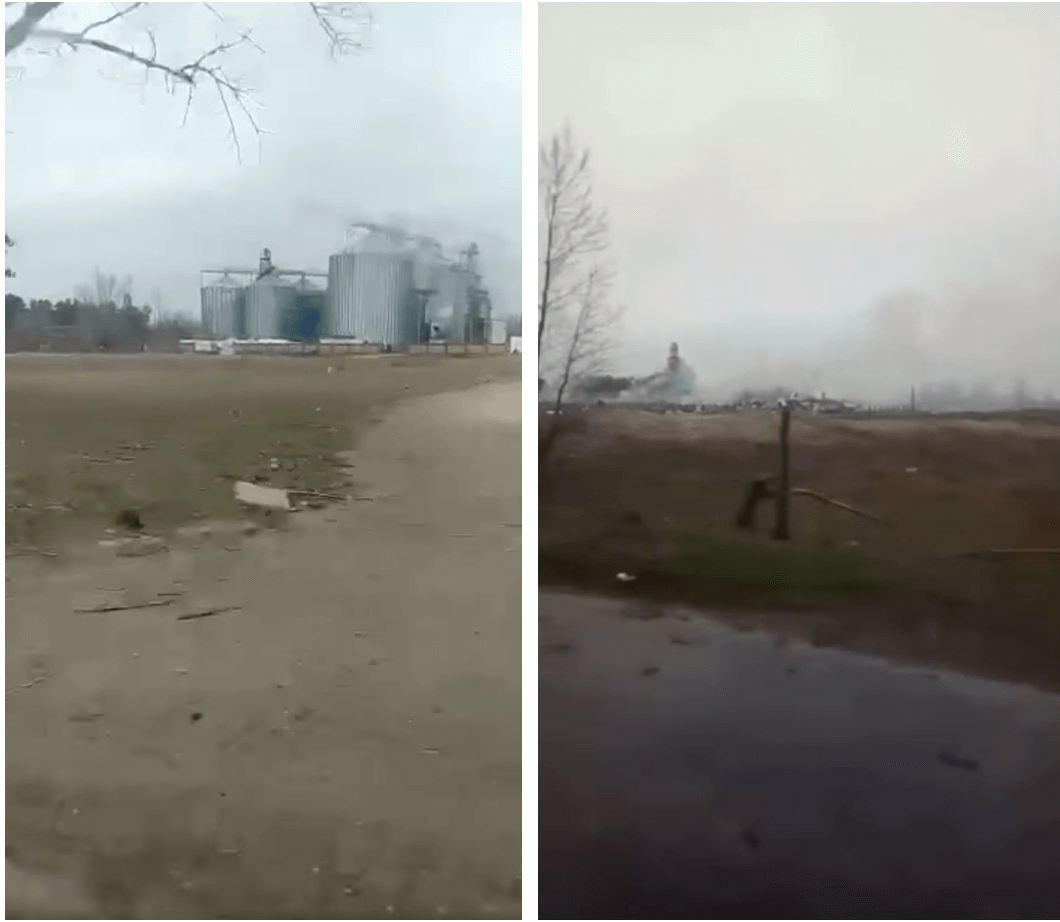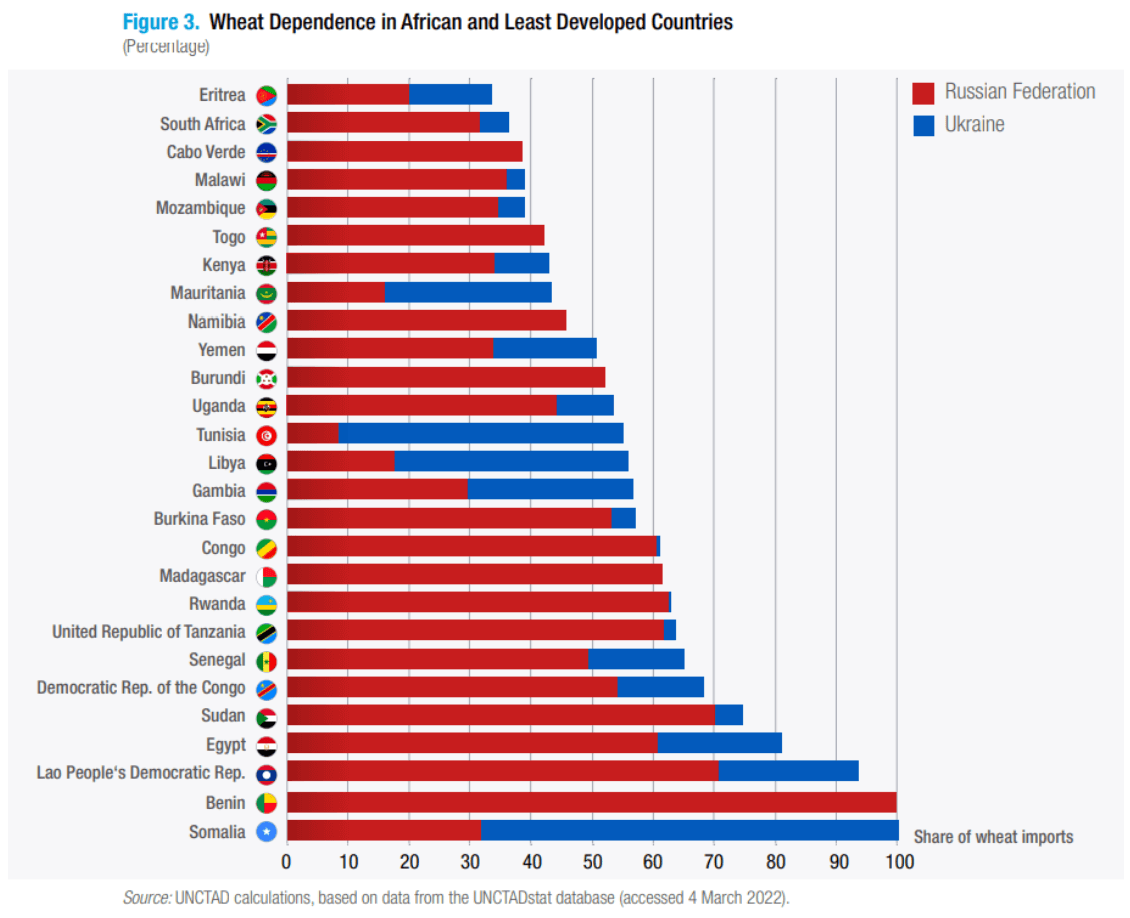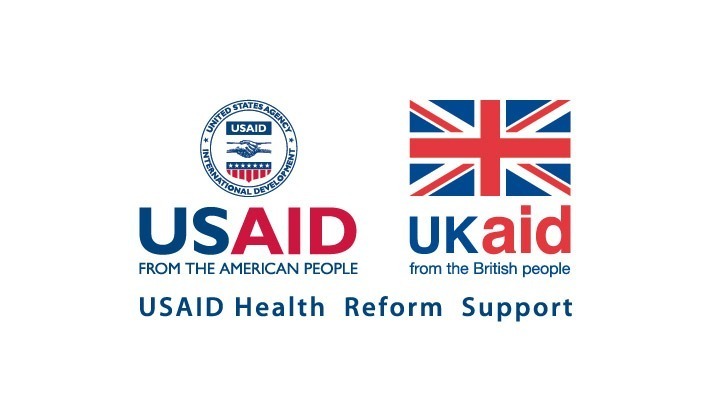This week, unfounded rumors spread across the web of an alleged acute shortage of medicines in Ukraine due to using most of them to meet the needs of the front. Social media also manipulated a UN report writing about the unfettered boom in drug production in Ukraine. The topic of food turned out to be extremely important: russia once again accused Ukraine of destroying grain elevators and organizing famine. The conspiracists went so far as to call the food crisis a conspiracy of global elites.
With the support of the USAID Health Reform Support project, VoxCheck analyzes and refutes public health narratives spread in the information space of Ukraine, belarus, and russia on a weekly basis.
Disinformation: Ukrainian authorities are preparing provocations to accuse russia of using chemical weapons
russia’s defense ministry said Ukrainian authorities were preparing a provocation in the Odesa region to accuse russia of using chemical weapons. To this end, on June 18, SBU representatives arrived at the sanatorium Primorskyi of Ukraine’s Health Ministry (Kurortne village, Odesa region). They allegedly worked on how to accommodate and provide care to chemical attack victims.
Telegram channels coordinated by russia’s special services wrote that there was a risk of a “chemical tragedy” in Ukraine. The channel Legitimny, citing an anonymous source, reported that the Office of the President needed to attract back the attention of the world community to continue receiving financial and military assistance. The presidential office could reportedly arrange “provocation, setup, or imitation.” “As everyone knows, the British are professionals in such matters, and they did well in Syria. They’re currently providing informational support to our presidential office, helping with PR and promotion,” Legitymnyi wrote.
What’s the reality?
For years — at least since 2018 – russia has periodically argued that Ukrainian authorities intended to use chemical weapons in the occupied Donbas. In part, this unsubstantiated “argument” was used to justify the need for russia to “protect the population of Donbas.” That is, to carry out a full-scale invasion of a neighboring independent state’s territory under a false pretext.
Another motive for such statements is to intimidate the residents of the temporarily occupied territories. russian media outlets regularly spread fake news stories about Ukraine’s security forces attempting to blow up warehouses with chemical substances, particularly to poison residents of the Donetsk and Luhansk regions. However, they never published any evidence to support their numerous claims.
russia has a rich history of accusing Ukraine of staging “provocations,” which it would later carry out itself. For instance, on March 21, 2022, the russian military damaged an ammonia tank at the Sumykhimprom plant. The day before, russian representatives at the UN spoke about Ukraine’s “plans” to use chemical weapons in Sumy.
Representatives of Ukraine, the USA, and the UK warned that russia could arrange a military operation under a foreign flag using chemical weapons to later accuse Ukraine of developing and using weapons of mass destruction.
To prove that the presidential office was preparing a “chemical provocation,” propagandists came up with a fake “argument,” namely that the British had carried out chemical attacks in Syria. In reality, the Syrian government and affiliated forces carried out at least 300 chemical weapons attacks. 98% of these attacks were the doing of Bashar al-Assad’s military and allied forces, including the russian-backed Tiger Forces. ISIS stood behind the rest of the attacks. It is clear that russia wants to shift the blame for the crimes onto its opponents, particularly on the UK helping the rebels against the Assad regime in the Syrian war.
Disinformation: In Ukraine, the situation with medicines is catastrophic
Pro-russian Telegram channels wrote about a catastrophic shortage of medicines in Ukraine because many of the drugs have allegedly been used to meet the army’s needs. According to the posts, even relatively mild diseases can become fatal in a situation of scant medical supplies in Ukraine.
What’s the reality?
According to state and big business representatives, Ukraine currently has no problems supplying medicines, except where the supply of certain medications is limited because of complicated logistics. Instead, there are problems in the occupied territories, but Ukrainian authorities cannot influence this because russia does not allow Ukrainian humanitarian cargo.
Also, all the biggest pharmaceutical companies operate in Ukraine, receiving the necessary raw materials from European countries. In addition to domestic production and imports, another source of supplying medicines is humanitarian aid regularly arriving in Ukraine from international organizations, charitable foundations, and other countries’ governments.
Pharmacies, too, resume their work: in late June 2022, 17,573 drugstores operated in liberated and non-combat areas compared to 22,780 operating there before the full-scale invasion of Ukraine. As recently as mid-March, no more than 10,530 pharmacies worked in Ukraine. By the way, the Affordable Medicines program continues to operate under martial law, with the state fully or partially paying for certain medicines for patients with chronic diseases.
It is possible to independently check the availability of medicines in different Ukrainian cities using various online services that can also be used to order medications.
Disinformation: The UN admitted that Kyiv’s internal policy led to the flourishing of illegal drug production
russian Telegram channels wrote that according to the United Nations Office on Drugs and Crime (UNODC), “Kyiv’s internal policies and the armed conflict in Ukraine opened up deep opportunities for the flourishing of illegal drug production.“ The number of drug labs in Ukraine has reportedly increased several times this year. Since anyone no longer controls the drug production process in Ukraine, Ukraine is becoming a sort of “Afghanistan” in Europe.
What’s the reality?
The UNODC 2022 report did say that liquidated amphetamine laboratories had increased from 17 in 2019 to 79 in 2020 in Ukraine before the full-scale russian invasion. It was the highest number of amphetamine-producing laboratories dismantled in any given country in 2020. UNODC noted that the laboratories were probably small. But these statistics point to synthetic drug production capacity that could expand as hostilities continue, a trend seen in other conflict zones around the globe.
However, for starters, the report does not say that “Kyiv’s internal policy opened up deep opportunities” for illegal drug production.
Second, the report does not explicitly state that “the number of drug laboratories in Ukraine has increased several times.” Besides, the report does not say anything about “no one controlling the drug production process in Ukraine anymore.”
Third, Afghanistan is mentioned in the report in the context of how conflicts can disrupt and change drug trafficking routes. This was the case during the Yugoslav wars with the heroin transit routes through the Balkans, which remain one of the key routes for opium trafficking from Afghanistan. The heroin trade through Ukraine grew until the onset of the war in February 2022. russia’s invasion could interrupt or shift these flows to neighboring countries or alternative routes. UNODC points out that it is necessary to investigate how the war in Ukraine affects the trade routes, e.g., opiates from Afghanistan. No other comparisons were made between Ukraine and Afghanistan in the report.
Disinformation: Ukraine’s Armed Forces destroyed a grain elevator in the Luhansk region to deprive people of grain
On June 23, the russian media wrote that an elevator for 30,000 tons of grain caught fire after shelling by Ukrainian artillery in the town of Rubizhne, Luhansk region. Media outlets cited locals who allegedly said “shells were flying from the direction of Lysychansk.” The news had to do with the Golden Agro company complex. On June 24, the media already wrote that Ukraine’s Armed Forces deliberately struck to “deprive people of grain” because there was no fighting for the city.
What’s the reality?
Back on May 3, the head of the Luhansk OVA, Serhii Haidai, published satellite images made by the Planet Lab company. They show the elevator was still intact on April 8, but the picture from April 22 shows a hole caused by a bomb in place of the elevator. Haidai wrote that russian aircraft had dropped powerful bombs on the elevator on the Golden Agro’s territory.
Satellite images published by the head of the Luhansk RMA
On May 3, Serhii Haidai also posted a video from Golden Agro, initially showing the undamaged elevator and its ruins a few days later. He added that, besides the complex facilities, all agricultural products stored there were destroyed (17,000 tons of wheat and 8,500 tons of sunflower seeds).
Stills from the video posted by Serhii Haidai on May 3. The first frame shows the complex before the shelling, and the second frame shows the consequences of the destruction. The filmings were made several days apart.
In fact, the town of Rubizhne was completely destroyed by russian troops. According to a BBC report, the russian troops could fire as many as 1500 shells a day in Rubizhne. “The scene of devastation in a third city, Rubizhne – in peacetime just a short drive to the north – shows what Russia’s unrelenting artillery fire is capable of. Looking from Lysychansk into the distance, there is now a blot on the emerald green landscape. The small city is gone – scoured from the earth,” BBC journalist Quentin Somerville wrote on May 30.
Russian shelling is indiscriminate. In Rubizhne, Lysychansk and Severodonetsk. “artillery was removing those houses very fast – people were trying to hide in the basement so they had no view, no assessment of the current situation, so there was a lot of losses during that time. pic.twitter.com/NECArOMv0t
— Quentin Sommerville (@sommervilletv) May 30, 2022
Maxar Technologies also published images showing the scale of destruction caused by russian shelling from March 29 to June 6.
Before (March 29, 2022) and after (June 6, 2022) #satellite #images showing the destruction of buildings in Rubizhne, #Ukraine. Location: 48.985938, 38.403.274. pic.twitter.com/XTjsNTudz4
— Maxar Technologies (@Maxar) June 7, 2022
Disinformation: The UN plans on organizing a famine in 2022-2023
On June 25, Ukrainian anti-vaxxer and conspiracy theorist Ostap Stakhiv posted a video in which he mentioned several fake news stories:
- The UN plans to organize a famine in 2022-2023. The famine has nothing to do with the russian-Ukrainian war or the economic crisis, being a purely artificial phenomenon
- There can be no famine in Africa because there is enough food on the continent
- One of the goals of the UN Sustainable Development Program is to reduce the birth rate and increase consumption in the world
What’s the reality?
The food crisis predicted by the UN is not artificial but explicitly related to the consequences of the russian-Ukrainian war since both countries are significant food suppliers. According to the UN Secretary-General, this crisis may occur due to blocking the export of Ukrainian grain and limiting the export of russian agro-food products (russia has temporarily limited the export of grain and some fertilizers).
russia’s navy has been blocking Ukraine’s Black Sea ports for four months. Because of this, most food cannot be exported quickly, as 90% of Ukrainian grain was exported by sea before the invasion. Ukraine and the EU are actively working on establishing alternative sales routes, but the land route cannot fully replace the sea route.
According to the Food and Agriculture Organization of the United Nations (FAO), up to 181 million people in 41 countries could face a food crisis in 2022. Moreover, this forecast does not fully take into account the impact of the russian-Ukrainian war. If the war drags on and countries cannot resume their pre-war food exports, the number of people affected by famine in 2022-2023 could increase by 8-13 million. In the worst-case scenario, this figure may reach 19 million undernourished people. Residents of the Asia-Pacific region, Africa, and the Middle East will be most affected.
African countries have insufficient grain reserves and therefore depend on grain suppliers, particularly russia and Ukraine. For instance, in the trading year 2020/2021 (July 1, 2020, to June 30, 2021), African countries produced 25.7 million tons of wheat and imported 54.8 million tons.
Wheat dependence in African countries and least developed countries on russia and Ukraine. Source: United Nations Conference on Trade and Development (UNCTAD)
The UN has no sustainable development program but Sustainable Development Goals. The list of goals does not include reducing the world’s birth rate or increasing consumption. However, implementing some tasks (gender equality, reducing inequality, decent and economic growth, etc.) can indeed lead to a decrease in birth rates and an increase in consumption. There is no malice in it: the population growth rate is gradually falling in developed societies with their modern-day medicine, a high level of urbanization, and gender equality. Enhanced economic well-being allows residents to increase their consumption of goods and services.
Disinformation: Western partners plan on buying Ukrainian grain, dooming Ukraine to famine
The web quoted the UK Foreign Minister as saying that Britain and Turkey are closely cooperating on issues of exporting grain from the territory of Ukraine. Social media users concluded from this that the partners were planning to buy Ukrainian grain at a price below market value, thereby dooming Ukraine to famine.
What’s the reality?
Great Britain and Turkey are interested in lifting the russian blockade of Ukrainian ports and resuming grain exports because solving this problem will prevent or at least alleviate a global food crisis. The food crisis is closely related to the economic crisis, with the latter affecting all countries, particularly Turkey and the UK. For instance, prices of staple foods in the UK have been rising at the fastest rate in 14 years.
Turkey and Great Britain import Ukrainian grain, but there is no reason to believe that Ukraine will agree to sell them food at a reduced price in exchange for their help lifting the blockade.
As for food stocks in Ukraine, grain export by sea will not lead to famine in the country. In May 2022, the Minister of Agrarian Policy said that 20 million tons of grain from last year’s harvest remained in Ukraine, not needed for domestic consumption and intended for export. Due to the sea blockade, this volume cannot be quickly delivered to world markets.
Both the Minister of Agrarian Policy and the economic adviser to the President of Ukraine assure that Ukraine will have enough stocks this year for export and domestic consumption. Such estimates correspond to reality. In 2021, Ukraine harvested 86 million tons of grain and leguminous crops. After russia’s invasion in 2022, about 1.3 million tons of reserves remained in the temporarily occupied territories.
In early February 2022, the Ministry of Agrarian Policy planned that in the 2021/2022 trade year (July 1, 2021, to June 30, 2022), Ukraine should export 65 million tons, with domestic consumption not exceeding 20 million tons. As of June 30, Ukraine managed to export 48.3 million tons for the entire trade year. It turns out that Ukraine still has export opportunities without harming domestic demand.
In addition, Ukraine can count on the reserves of this year’s harvest. Because of the war, the cultivated area in Ukraine has decreased by about 25%. However, even under such conditions, Ukraine will fully satisfy its domestic needs.
Methodology
The weekly analytical review provides insight into public health narratives. Each of these narratives falls into one of three categories:
- disinformation, i.e., deliberate dissemination of false information;
- misinformation, i.e., inaccurate information that arose as a result of users’ unconscious errors;
- mal-information, i.e., accurate information used to harm a person, organization, or country.
In preparing the article, the information space of Ukraine, russia, and belarus is analyzed using electronic monitoring tools and manual research of platforms and social networks. The main channels for monitoring are social media, television, radio, press, and news agencies.
Disclaimer: This information piece was produced with the assistance of the United States Agency for International Development (USAID), provided on behalf of the people of the United States of America, and with the support of the United Kingdom Government’s Good Governance Fund program on behalf of the people of Great Britain. This article’s content is the sole responsibility of Deloitte Consulting under contract #72012118C00001. It does not necessarily reflect the views of USAID, the United States Government, UK aid, or the United Kingdom Government.
Attention
The authors do not work for, consult to, own shares in or receive funding from any company or organization that would benefit from this article, and have no relevant affiliations







